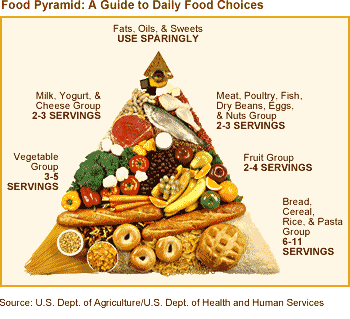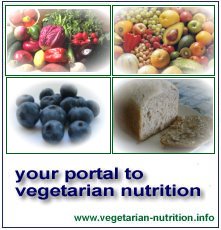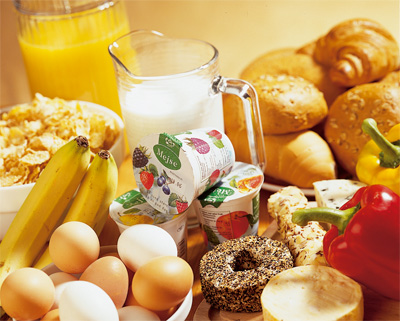Nutrition
Jump to
- Return to Main Page
- Training Food
- Pre-Race Diet
- Race Day Workout
- Post Race Diet
- Pre-Race Rest and Carbohydrate-Loading
Recovery Food
Many people are unaware of the benefits of milk let alone chocolate milk. Studies have been done separately on each milk and chocolate, but never in combination. It wasn’t until recently that scientists began to delve into the benefits of chocolate milk versus water or Gatorade after a workout. Athletes such as Michael Phelps drew attention to this at the 2004 Olympics when he was seen to be drinking Carnation chocolate drinks after swims. Studies now show that chocolate milk aids the body in recovery, most importantly the muscles. Depending on what kind of chocolate milk you drink, depends on the amount of calories. Eight ounces of whole chocolate milk contains approximately 210 calories, reduced fat milk contains between 160-170 calories, and skim milk contains 160 calories approximately per eight ounces. When comparing these different kinds of milk, it’s important to look into information regarding the type of milk used when mixing a chocolate milk drink and its nutritional benefits. There are four types of dairy milk derived on the market: whole, 2%, 1%, and skim. But there are also other types of milk that are non-dairy like soy milk, rice milk, and goat’s milk that is often fortified with the same ingredients as regular cow’s milk.
It is extremely important to refuel after a workout, particularly within the first fifteen minutes after completing any form of physical exercise. Rowing is considered as a strenuous activity and its depletes muscle energy. Chocolate milk is the ultimate recovery aid for exhausted muscles. It is full of nutrients that help build up the muscles and prevent them from depleting. It also reduces the risk of muscle damage when exercising through the essential amino acids found in the protein. These proteins work in harmony in order to repair and restore muscle composition and allow the body to build leaner muscle in order to become healthier.
Training Food
You should expect your rower to be hungry, really hungry when they get off the water. Feeding them 120-240 calories within half an hour, and then a similar amount every two hours until they go to bed will help them recover and be ready for the next day, both as a student and as an athlete. A rower’s diet is very similar to that of your average adolescent, with one critical exception: carbohydrates. Rowers need more carbohydrates. The energy a rower uses primarily comes from carbohydrate stored in the muscles as glycogen. The carbohydrate level in the muscle must be restored before the next practice in order for the athlete to “recover” and be ready to work hard again. If the levels are not restored, the athlete remains fatigued and training is not effective. If the problem persists, they will not be able to race well.
Important Consideration
- Adequate Calories
- Rowers must consume enough food or Lean Body Mass will be sacrificed by the body breaking down its own protein (muscles, tissues) for energy. This will leave less of an engine for rowing. Water is also lost when tissue is broken down
- Adequate Carbohydrates ( 60 % of total calories )
- Athletes need to maximize glycogen (carbohydrate) stores for competition and sustained training programs. To consistently perform well in practice and races, rowers must constantly refill glycogen-depleted muscles. It takes time and timing to accomplish refueling efficiently
- Protein ( 15 - 20 % of total calories )
- Extra protein may be unnecessary, but the RDA of protein is essential for a well-balanced diet. Recent studies show a small amount of post-exercise low-fat protein helps athletes recover from multiple workouts and ongoing training more quickly. Some safe recommendations for protein intake are as follows:
gms. of protein/ lb. body weight Sedentary adult 0.4 Competitive Adult Athlete 0.6 - 0.9 Competitive growing athlete 0.9 - 1.0
- Fats ( 20 - 25 %)
- Some fat such as mono-saturated and polyunsaturated fats are essential for a healthy, active lifestyle. Omega-3 fatty acids are particularly helpful for athletes.
- Vegetarianism
- Although it is possible to compete on an equal level with non-vegetarian rowing competitors, there are several key nutrition issues that must be addressed.
- Getting enough iron and Vitamin B12
- Meeting calcium needs
- Eating enough calories
The real issue, then, when looking at a rower's diet, is not what he or she eats on the day of the race, but whether they are able to maintain glycogen in the muscle at an optimum level to support their training regime for the days leading up to the competition. To support the high energy requirements of one or two vigorous training sessions on a daily basis requires a diet which is high in carbohydrate; adequate in protein, vitamins, minerals and fluids, and minimal in fat. Without attention to diet composition the rower runs the risk of gradually depleting glycogen stores during each training session and never allowing the muscle to fully regain its potential supply. This situation not only makes it difficult to obtain the greatest benefits from a training programme, it also means the athlete could enter the competition with glycogen stores that are unable to sustain an all-out competitive effort. At a recent team selection process, for example, an oarswoman participated in nutritional counselling, mainly because she was suffering from low energy and was unable to train at the level she wanted to. She thought that her low energy level might be due to a diet lacking in iron.
Analysis, however, showed that, while her iron intake was fine, only 36% of her daily calories came from carbohydrate - well below the recommended 60% level. In reality, she was not eating enough carbohydrate foods to provide the necessary glycogen levels to support her training. Her goal was to change her diet to maximise her training and competitive efforts.credits: Sunny Blende M.S. nutritionist; Marjorie T Hagerman
Sample Menu
Breakfast
- Cereal, toast, bagels
- Fruit and fruit juices
- Eggs (boiled or poached are prepared without added fat ); limit to 3 to 5 per week
- Lean ham - no more than twice per week (no bacon or sausage)
- Low fat yoghurt or soft cheese
- Skimmed or semi-skimmed milk
Lunch and Dinner
- Low fat soup
- Salads with low fat or vingerette dressings
- Vegetables of all kinds
- Lean meat, fish, poultry; skinless and steamed or roasted rather than deep-fried
- Peanut butter (in limited amounts)
- Bread/rolls/bagels
- Fresh or tinned fruit in unsweetened juice
- Low-fat frozen yogurt, sorbet (other desserts limited to 2 to 3 times per week only)
- Skimmed or semi-skimmed milk
Snacks
- Jam or peanut butter sandwiches
- Fresh or dried fruits and fruit juices
- Fig bars, oatmeal cookies
- Ice lollies, low-fat fruit yogurt, power bars
Athletes often wonder about the wisdom of including sweets as a part of their high carbohydrate training diet. From a standpoint of glycogen replacement, in the first 24 hours following an event, carbohydrate from simple sugars has a slight edge over starch carbohydrate in replenishing muscle glycogen. However, during the following 48 hours, starch carbohydrate is preferable for optimal glycogen stores. The practical suggestion is to include a mixture of carbohydrates, with concentrated sweet foodstuffs (biscuits, sweets, cakes, sweet desserts) eaten only in limited amounts, since they are also frequently high in fat and don't come packaged with as many other valuable vitamins and minerals (folic acid and iron, for example) as do carbohydrates from grains, fruits, vegetables and legumes.
Back to Jump
Pre-race / Workout food
Back to JumpGoals
- Fuel muscles with stored glycogen
- Settle your stomach- absorb gastric juices
- Prevent hypoglycemia (low blood sugar) with accompanying symptoms of lightheadedness, blurred vision, indecisiveness, bonking
- Psychological - Winning edge and having fun!
How to Calculate Amount of Carbohydrate Intake (CHO)
0.5 to 2 gms. CHO/lb.. of body weight, consumed 1-4 hours before exercise
130 lbs 150 lbs 180 lbs 1 bagel 30 gms 1 bagel 30 gms 1.5 bagels 40 gms 1 T jelly 12 2 T jelly 24 2 T jelly 24 8 oz. drink 17 8 oz. drink 17 8 oz. drink 17 Total 59 gms Total 71 gms Total 81 gms Calculated 65 gms Calculated 75 gms Calculated 90 gms (above example is 0.5 gm. carbohydrate per lb. of body weight eaten 1 hour before a workout. If the last meal is two hours before training, then the rower would need 1 gm. CHO/lb. of body weight, etc.) Note: T = tablespoon
Guidelines
- Allow adequate time for food to digest.
- Large Meal- 4-6 hours.
- Liquid Meal- 1-2 hours.
- Small Meal- 2-3 hours.
- Snack or Sports Drink- 1 hour.
- Allow more time for digestion as intensity of exercise increases because muscles require more blood during intense exercise. As blood leaves the stomach to go to the muscles, digestion slows down.
- Avoid sugared foods from 1 hour before exercise up to 5-10 minutes. This avoids a blood sugar spike followed by a plunge due to the release of insulin which prevents fats being released from cells and available for energy. This uses up glycogen even quicker! The last 5-10 minutes is too short a time for insulin to be secreted and secretion is turned off during exercise
- Eat a high-carbohydrate diet daily so muscles will be fueled, especially if you have a jittery stomach and usually abstain from pre-race meals. Rowers can still perform well under these circumstances.
- Eat familiar foods before a race, experiment in practice.
- Hydrate -- the day before and an hour before. Longer races benefit from electrolytes.
During the Race Workout
Goals : Hydration
How to Implement
- Races (or training) under 1 hour - water only
- Higher intensity = more dehydrated
- Higher the heat = more water loss, however the body can be trained to conserve electrolytes in the heat
- Training over 1 hour - beverage with carbohydrate
- 1 gm. Carbohydrate (4 calories) per minute of exercise.
- 6% glucose such as Gatorade, Powerade, Accelerade. Be careful with fruit juices. The fructose in fruit juices can cause gastric upset, but helps absorption of CHO after 2-3 hours of continuous exercise.
- GU has 100 calories per packet. This would work every 25-30 min. WITH WATER.
- READ LABELS of sports drinks and food!
Guidelines
- Important thing may not be how much you drink, but how quickly the drink can be absorbed.
- Cold drinks leave the stomach quickly and are absorbed faster.
- Large volumes leave stomach quickly but may not be tolerated well.
- Above 75% intensity of effort, harder for body to absorb liquids.
- Sports drinks (with CHO) help to maintain blood sugar and stamina, therefore allowing exercise to go on longer. Glucose aids absorption
- Electrolytes help absorption and keep sodium (salts) in the body in balance. They may also keep an athlete thirsty and drinking longer.
- 60 calories every 15 minutes. (EX. 1 packet GU=100 cal. or 25gms.CHO)
Remember, a gram of carbohydrates a minute. The maximum amount of carbohydrate calories that can be absorbed is 250 calories an hour (in an elite male athlete).
Back to Jump
Post Race / Workout Food
Goals : *Refueling should begin as soon as possible after a training/racing session.*
- The ability of muscle to replace glycogen is greatest in the first 30 minutes following exercise.
- Within 5-10 minutes is even better to keep energy levels high.
How to Implement
- Type of Carbohydrate - Simple and complex (refined and unrefined) carbohydrates are equally effective in glycogen repletion, but complex unrefined have added benefits of fiber, vitamins, minerals and decreased fat. See Glycemic Index Chart.
- How Much Carbohydrate (CHO):
- TARGET: 0.5 gms. of CHO/lb. of body weight within the first 2 hours
- Repeat 2 hours later.
- 150 lb. x 0.5 gms. CHO = 75 gms. CHO (1gm.= 4 calories)
- 75 grams = 300 calories of carbohydrates
Guidelines
- Muscles can store 2 times the amount of CHO within the first 30 minutes
- Energy Bar with < 30% fat and water or Sports Recovery Drinks. A small amount of protein may help speed recovery even more. The ratio is 1:4, Protein to Carbohydrates
- Easy workouts don't require this much CHO since glycogen is not depleted. If the workout is less than one hour and the rower starts out fully carbo-loaded, he or she may not be very depleted
- Low Glycemic Index and complex carbohydrate foods are better consumed before a race.
- High Glycemic Index (GI) and simple carbohydrate foods are better consumed after a race. These food have a role in post -exercise recovery by maximising glycogen resynthesis
- High GI food -- watermelon, jelly bean or jelly snakes
Back to Jump
Pre-race Rest and Carbohydrate-loading
Trained muscles can store more glycogen than untrained ones and they use less glycogen during rowing than untrained muscles. Training teaches muscles to use a higher percentage of fat as fuel. Diet manipulation, along with the right workout, can almost double the amount of glycogen in skeletal muscles. This works best on fit rowers.
Goals :
To rest the muscles by cutting back on exercise and to supersaturate them with carbohydrates in anticipation of competition and racing.Guidelines
- Loading improves endurance, not speed
- Be careful - for every molecule of glycogen stored, three molecules of water are needed. Extra water can be used for hydration, but has a sluggish feeling effect on muscles.
- Loading involves tapering off exercise coupled with a 50-60% carbohydrate diet that is increased to 70%. It is hard to eat that much!
- Eat carbohydrates that are familiar and be careful not to fat-load.
- Wholesome, fiber-rich carbohydrates will keep your system regular.
- Drink extra fluids to hydrate your body while limiting dehydrating fluids such as caffeine-containing beverages. Remember, extra carbohydrates need extra water.
7 - Day Plan for Carbo-Loading before a Race (Race Day Saturday)
Day One (Sunday)
- High Carbohydrate, Adequate Protein
- Don't skip meals
Day Two (Monday)
- High Carbohydrate, Adequate Protein
- Don't skip meals
Day Three (Tuesday)
- High Carbohydrate, Moderate-plus Protein
- Don't skip meals
Day Four (Wednesday)
- Very high Carbohydrate, Adequate Protein
- Don't skip meals
Day Five (Thursday)
- Very high Carbohydrate, Adequate Protein
- Last day for practice
Day Six (Friday)
- All day eat lots of starch (snacks)
- High calories, high Carbohydrate, low Fat
- Drink plenty of fluids
Day Seven RACE DAY
- Eat pre-race food according to race schedule allowing time to digest
Back to Jump




